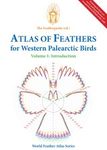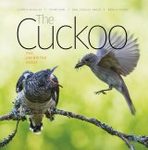![Ecology and Behavior of Chickadees and Titmice Ecology and Behavior of Chickadees and Titmice]()
Click to have a closer look
About this book
Contents
Customer reviews
Related titles
About this book
Chickadees and titmice are among the most popular birds in North America, due in large part to their readiness to use bird feeders, to nest in urban gardens, and even to be trained to take food from people's hands. These attributes have also made them (and their Eurasian tit counterparts) perhaps the most intensively studied bird family in the world. Long-term research in Europe has yielded some of the most comprehensive data on the impact of global warming on the breeding ecology of birds. Chickadees have amongst the best-studied and most complex vocal behaviour of any bird species, displaying one of the closest analogies to human sentence structure in the animal kingdom in their familiar chick-a-dee call. The social dominance hierarchies commonly witnessed in the form of squabbling at winter feeders are some of most stable and closely studied, and have huge impacts on controlling the lives of these small birds. Their food-storing behavior, and the brain and physiological mechanisms controlling this, has contributed significantly to our wider understanding of spatial orientation. In recent years, these birds have also been used as model species for investigating topics as diverse as inter-species hybridization, the impacts of forest fragmentation and complex systems of communication. In short, chickadees and titmice have contributed enormously to our understanding of a myriad of topics in ecology, behavior and psychology.
This book brings together a range of experts from across North America who utilise chickadees or titmice as study organisms. Each chapter reviews the latest advances in evolution and behavioral research that have been accomplished through the study of North American Parids, and compares and contrasts this literature with research on their Eurasian counterparts as well as other avian families.
This research level text is aimed at professional avian biologists and ornithologists as well as graduate students of avian behavioral ecology and evolution. It will also appeal to a more general audience of behavioural ecologists, neuroethologists and experimental psychologists.
Contents
Preface; 1. Introduction to the North American Paridae; PROXIMATE MECHANISMS IN BEHAVIOR AND EVOLUTION; 2. Neurobiology of spatial behavior; 3. The relationship between environment, corticosterone, food caching, spatial memory and the hippocampus in chickadees; 4. Photoperiodism and the annual cycle of black-capped chickadees; 5. Fine-scale variation in the timing of reproduction in titmice and chickadees; Synopsis 1 Proximate mechanisms in behavior and evolution; REPRODUCTIVE ECOLOGY, EVOLUTION, AND BEHAVIOR; 6. Phylogeography of chestnut-backed chickadees in western North America; 7. Behavioral aspects of chickadee hybridization; 8. Population density, nest site selection, and reproduction in Mountain Chickadees with changes in forest health and the Nest Web structure; 9. Social dominance and fitness in black-capped chickadees; Synopsis 2 Parid reproductive behavior; VOCAL COMMUNICATION; 10. Chickadee vocal production and perception: an integrative approach to understanding acoustic communication; 11. The garglecall of black-capped chickadees: ontogeny, acoustic structure, population patterns, function, and processes leading to sharing of call characteristics; 12. How post-dispersal social environment may influence acoustic variation in birdsong; 13. "Information" and the chick-a-dee call: communicating with a complex vocal system; 14. Status signalling and communication networks in chickadees: complex communication with a simple song; Synopsis 3 Compexities in vocal communication; LANDSCAPE ECOLOGY, BEHAVIOR, AND CONSERVATION ISSUES; 15. Edge, patch and landscape effects on parid distribution and movements; 16. Winter adaptations in chickadees and titmice and the added effect of habitat fragmentation; 17. Habitat quality and reproductive behavior in chickadees and tits: potential for habitat matrix use in forest generalists; Synopsis 4 Landscape ecology, behavior, and conservation issues; 18. What drives differences between North American and Eurasian tit studies?
Customer Reviews


































